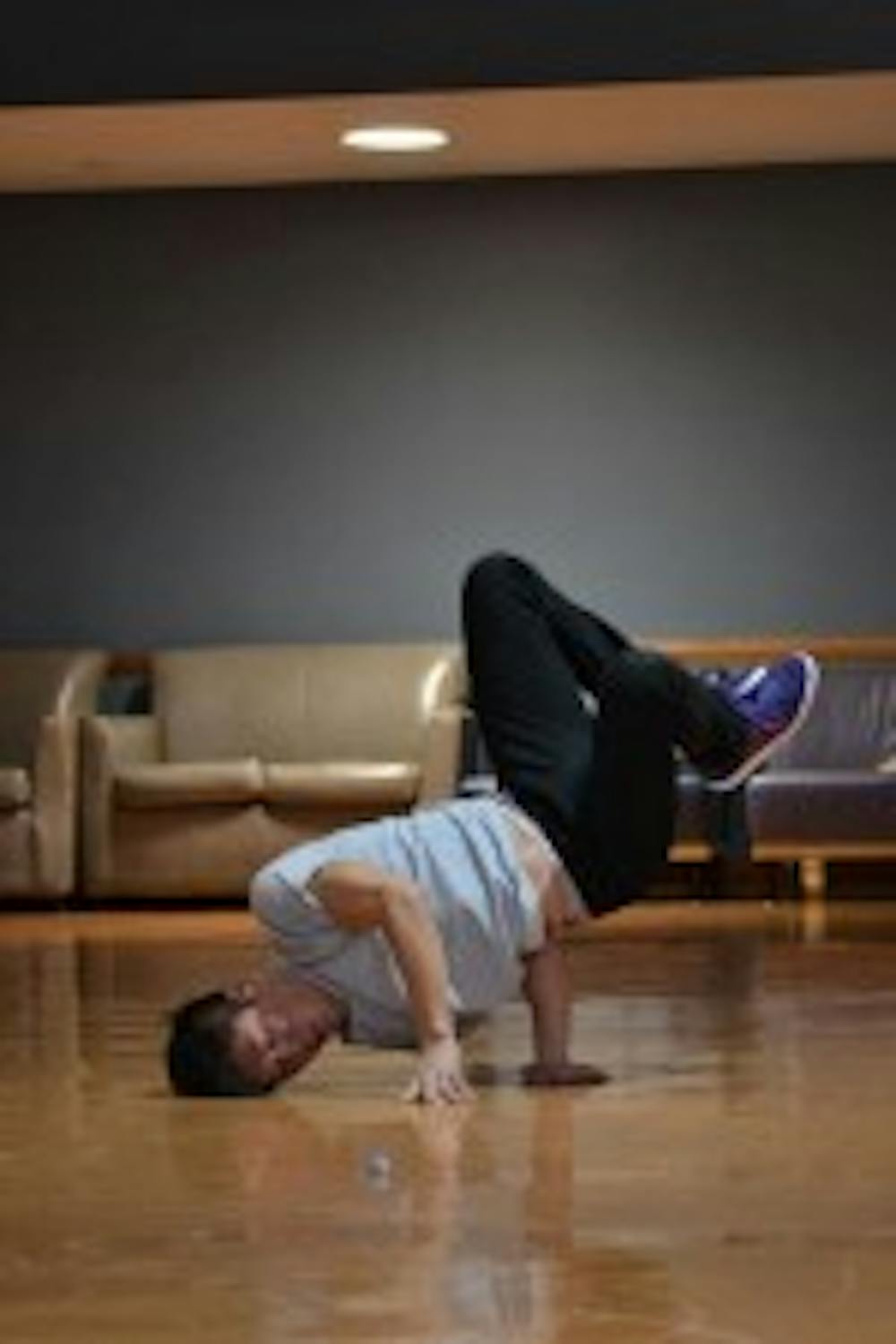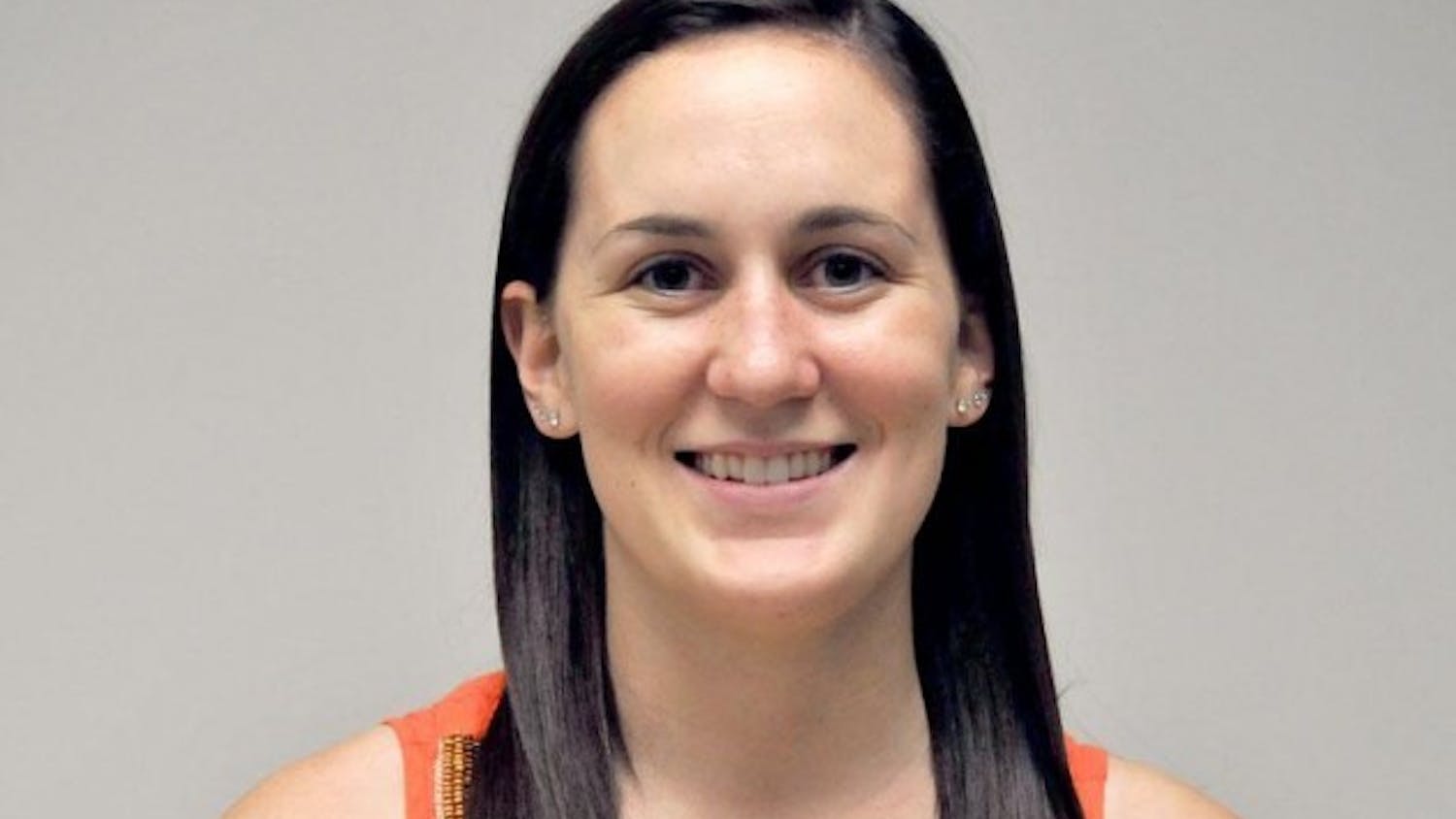Funk music blares from the Flag Room as Henry Chen spins effortlessly. With the entirety of his body weight balanced on one hand, it looks like he's performing an upside-down pirouette as he spins; the move he's practicing is called a 199.
Breaking (or breakdancing, as it is more popularly known) began in the '70s as part of the hip-hop culture, and while it looks cool, some people shy away from it because of the misconceptions surrounding it. The UB Breakdance club aims to change this reputation.
According to Ryan Nash, a junior African American studies major and president of UB Breakdance, breakdancing is like any other kind of dance but doesn't get the same recognition because it's not considered to be a "true" dance form.
This is because breakdancers - more commonly known as b-boys and b-girls - don't need formal training for their craft. However, they put in the same amount of time and effort to master hand hops as ballerinas do to perfect pirouettes, Nash said.
Breaking comes from one of New York City's boroughs, the Bronx. Breaking originated in South Bronx, where street gangs dominated the youth culture. This led people to assume that b-boys and b-girls were associated with the negativity that surrounded the region, according to Nash.
But breaking was not related to the violence of the South Bronx. In fact, many people who break do it for personal reasons - as a form of self-expression - according to Brendan Tom, a junior communication major and vice president of UB Breakdance.
"I take the emotions that I'm feeling toward something ... and I just use the energy of that emotion [toward] the energy of my dance," Tom said.
Just like in any other dance, there are competitions in breaking. B-boys and b-girls compete against each other in battles.
The name "battle" suggests they are violent - something the media was quick to pick up on. Movies consistently make battles the focal point of gang violence, but the hostility associated with them comes from the level of commitment and passion that b-boys and b-girls have. Everyone wants to win, and the only thing standing between a dancer and victory is his or her opponent, Tom said.
"In some ways it's like a Pok?(c)mon battle," Tom said. "Someone throws out their grass type, and you throw out your fire type. You're combating what's put before you. You want to one-up [your opponent]. [It] has an aggression similar to a fight because you're directing everything to your opponent."
According to Tom, the intensity overshadows the camaraderie that exists amongst b-boys and b-girls. At the end of battles, everyone shakes hands and hugs, but he says that is never shown in the media portrayal.
However, battles aren't just about winning, according to Chen, a junior business marketing major. Dancers usually call each other out to battle because they want to learn from one another. It's not supposed to be friendly, he said, because it's like fighting for a title without any real violence.
This negative image tied to breaking is what worries parents, like those of Veronica Li, a junior political science major and secretary for UB Breakdance.
They were worried about the violence when they found out what their daughter was doing in her spare time.
"My parents [said], 'don't do it, it's dangerous,'" Li said. "They think that gangsters are doing it or something."
Many parents do not fully understand what breaking meant to their children and question their reason to continue with the dance, Li said. Her reason was something members in the hip-hop and breaking community call "knowledge of self."
"I was unconfident, pessimistic and had a meek outlook in life," Li said. "After some time, I [realized] that breaking changed me. Dancing [with others] made me more confident in myself. I go back to it even when times get difficult because breaking allowed me to open up."
For others like Chen, it's a feeling of satisfaction - the ability to do things that look impossible, like spin on their heads and to defy gravity.
"When I first saw it I was like, 'Whoa, is that even possible? Can the human body do that?'" Chen said. "Knowing that I can do it makes me feel satisfied."
For Nash, it wasn't just about being able to do something cool or finding himself. One of the main reasons he continued breaking was to clear up the misconceptions surrounding the dance. That wasn't an easy process. In fact, he was made fun of and called gay when he started dancing.
"I was called a f****t, [but I] just laugh about it now," Nash said. "I saw videos of breakers [doing air flares] and I was like, 'there's no way kids should call him names.' There's so much talent and skill involved."
A column ran in Generation magazine in Nov. 2010, calling the members of UB Breakdance, "wannabe, city-smart, urban losers," according to Nash.
Rather than put him down, these comments were a wake-up call.
He realized there were people who still had no idea why b-boys and b-girls danced and the misconceptions surrounding the reason slowed down the evolution of breaking.
"[Those comments] put a flame under my ass and made me want to demystify all the misinformation about our dance," Nash said. "It was the first time I felt so offended in a long time, and it woke me up."
According to Nash, the best way to dispel the societal misconceptions about breakdancing is to make sure his own members understand the culture better. He has regular discussions with his club that he likes to call "Hip-Hop Studies 101: Discussion in Hip-Hop." They talk about art, history and contemporary issues of the culture and the multiple interpretations of breaking and hip-hop dancing.
Common stereotypes include people in the breaking community doing drugs and getting involved with gang violence. In reality, they don't have any time for those things, Tom said. B-boys and b-girls who want to improve their skills always practice and dedicate the majority of their time to becoming better dancers. They won't have time to get involved in detrimental things if they spend all their time practicing, according to Tom.
The breakdance club at UB sees how breaking has a positive effect on people and the members strive to spread that through community engagement programs.
They perform a comedic skit called "BREAK! the Influence" for elementary school kids, which follows a b-boy (who dances with a crew) who gets involved with smoking and drinking. His crewmates dress up as his parents, girlfriend and teachers to show the kids they don't need to drink or do drugs to be cool.
The club also aims to promote the breaking culture by introducing kids to it at an early age and by teaching them it's more than just about flying through the air or looking like they can defy gravity.
Breaking teaches discipline because they rely on each other to get better, according to Nash.
"I'll say something like, 'Yo, Henry, those flares are dope,' but he'll be like, 'nah, man, I suck,'" Nash said. "It's like we hate ourselves, but [that's because] we can always become better."
According to Shane Fry, co-owner of Verve Dance Studio, the Buffalo dance scene is on the rise, despite being very young. Fry remembers how different the scene was when he first started breaking and how it has grown over the years.
"The first practice that I went to before I joined [my] crew was in a kitchen," Fry said. "[My friend] would take the refrigerator and roll it into the closet and ... there were kids standing in a circle in his kitchen, just getting down."
Fry was able to open Verve Dance Studio in 2005 along with his wife and some friends.
The studio hosts a monthly competition, Battle @ Buffalo, on the last Saturday of every month. Competitors have come from all over the East Coast, as well as places like California and even Poland, Fry said. Some members of the UB Breakdance club participate in these battles; Nash and Tom both went to the finals in this past October's competition.
Everything involved with breaking in Buffalo - the dancers, battles, DJs, spectators, the amount of entertainment - has constantly grown, according to Fry, and he hopes it will continue to expand. The UB Breakdance club hopes to be a part of that expansion.
Email: features@ubspectrum.com





